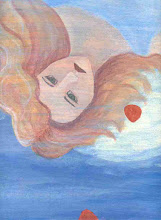May Finds a Way: Peril in Paris, by K.C. Frantzen, Rushjoy Press 2012.
This book is the second in the K9 Spy series, and this book is even stronger than the first.
It took me a chapter or two to fall in with "dog-speak", but I am pretty fluent in "cat-speak", even if the cat is a "Chat Parisien". Once I caught on, though, the story was very enjoyable.
In this book, May hits the ground running, and then she leaves the ground, and then she's off running again. I wouldn't be giving anything away if I told you that May ends up in Paris, since "Peril in Paris" is part of the title. Paris is probably my favorite city; I even love the seedy, dark underbelly, but I have not seen all the sights that May saw in this book.
Along the way, May helps, and is helped, and makes friends. Most of the friendships I thoroughly approved; one seemed a little odd and forced, but maybe that's how it is between dogs and insects.
The near-conclusion of this book struck a wrong chord for me. There is a pivotal scene where I would have expected more remorse and sympathy from a sweet and intelligent dog like May. I'm also not sure how much of this book the targeted audience (Middle Grade) would fully understand. My preferred genre is Thrillers/Mysteries, and some of espionage and intrigue lost me for a while. Even so, this book was flat-out fun.








































